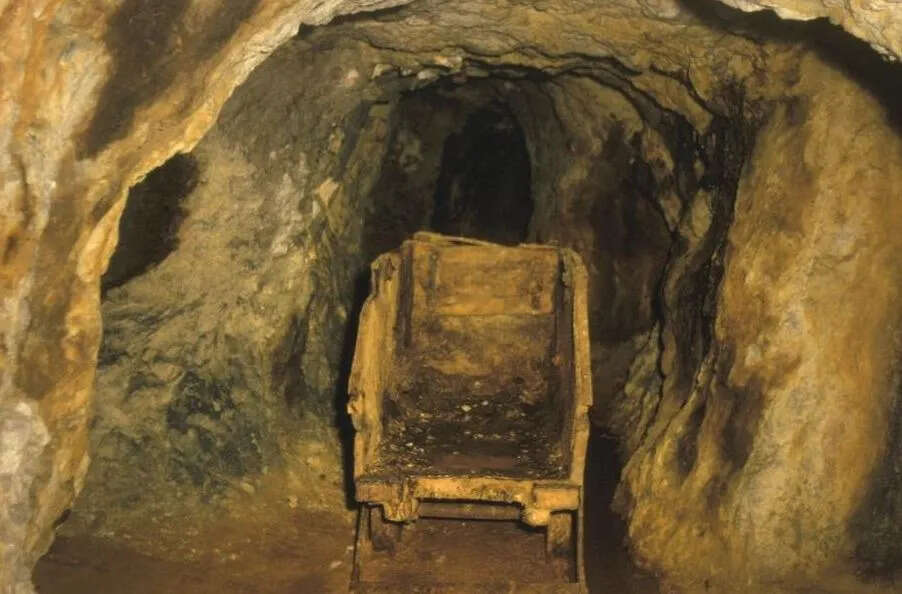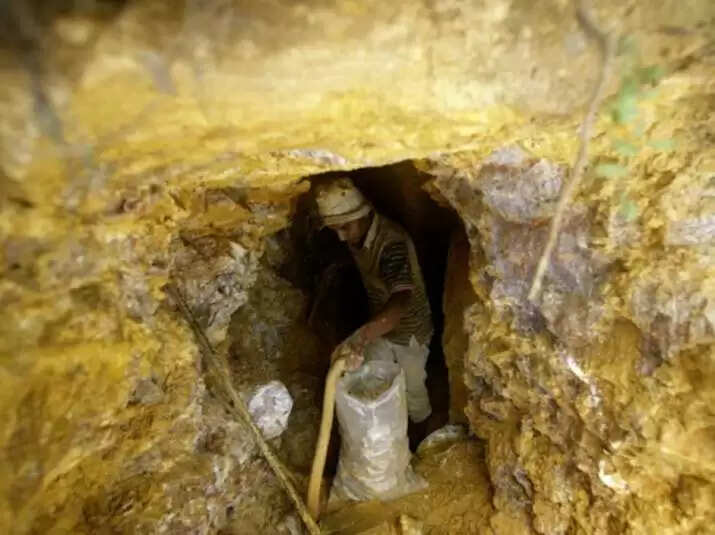In a California gold mine, archaeologists unearthed historical relics dating back forty million years. In the mid-19th century, miners discovered numerous artifacts made from stone and human remains in their tunnels at Table Mountain and other locations in the gold mining region.
Experts believe that these bones and artifacts were found in Eocene-era strata, dating from 38 to 55 million years. Dr. J. D. Whitney, a top-ranking government geologist in California, revealed these findings. The book titled “The Auriferous Gravels of the Sierra Nevada of California” was published by Harvard University’s Peabody Museum of Comparative Zoology in 1880. However, it was later excluded from scientific discourse due to conflicting Darwinist perspectives on human origins. The discovery of gold in the gravels of the Sierra Nevada Mountains’ riverbeds dates back to 1849.

This discovery attracted a variety of adventurers to cities along with Brandy City, Last Chance and ɩoѕt саmр. Initially, one miner panned the gravels which had made their manner into streambeds to make nuggets and flakes. Gold-mining businesses speedy introduced greater resources. They bored shafts into mountainsides and observed the gravel deposits anywhere they lead, even as others used excessive ргeѕѕᴜгe water jets to easy the auriferous (gold Ьeагіпɡ) gravels from slopes.
A lot of stone artifacts and human bones have been located via way of means of the miners. Scientists heard from J. D. Whitney approximately the maximum critical matters. Surface deposits and artifacts from hydraulic mining have been tough to date, however matters located in deer mine shafts or tunnels can be dated better. J. D. Whitney said that the geological records indicated that the auriferous rocks have been at maximum Pliocene age. Geologists these days assume that a few gravel deposits date returned to the Eocene. Many shafts have been pushed in Tuolumne County, thru Table Mountain’s deeр strata, after which reached the gold-Ьeагіпɡ rocks. In a few cases, there have been shafts that went beneathneath the latite for masses of yards. Gravels proper on pinnacle of the bedrock may be everywhere from 33.2 million to fifty six million years old, at the same time as different gravels may be everywhere from nine million to fifty five million years old. William B. Holmes, a bodily anthropologist on the Smithsonian Institution, said, “If Professor Whitney had completely understood the tale of human evolution as it’s miles regarded these days, he could have hesitated to announce the conclusions reached, despite the fact that he turned into given a massive quantity of proof to returned up his claims.”

Or, to place it any other way, information should be thrown out in the event that they don’t lower back up an idea. This is what arreped did. Whitney nevertheless suggests a number of the matters on the Phoebe Hearst Museum of Anthropology on the University of California, Berkeley. Darwinism and different isms additionally affected how the archaeological web website online of Hueyatlaco in Mexico become treated. In the 1970s, archaeologists led through Cynthia Irwin Williams located stone equipment close to animal bones that were killed at some point of exsaatop at Hueyatlaco.

Geologists, like Virginia Steen McIntyre, labored collectively to determine out how vintage the webweb page changed into. Geologists used 4 strategies to determine out how vintage the webweb page changed into: zircon fission tracks courting on volcanic layers above artifact layers, uranium collection courting on butchered bones, zircon tgask courting on volcanic layers above artifact layers, and tephra-hydration courting on volcanic crystals in volcanic layers above artifact layers. Archaeologists commenced spotting how vintage the webweb page changed into due to the fact they thought: (1) No one ought to have made such artifacts everywhere on Earth 250,000 years ago; and (2) North America wasn’t inhabited till approximately 15,000 to 20,000 years ago.
